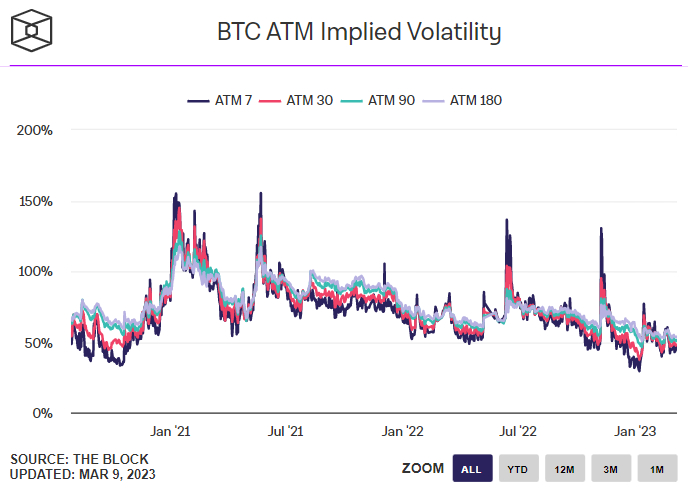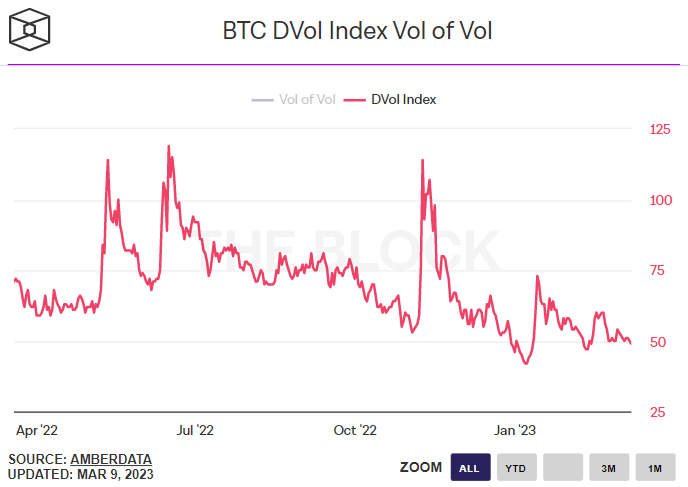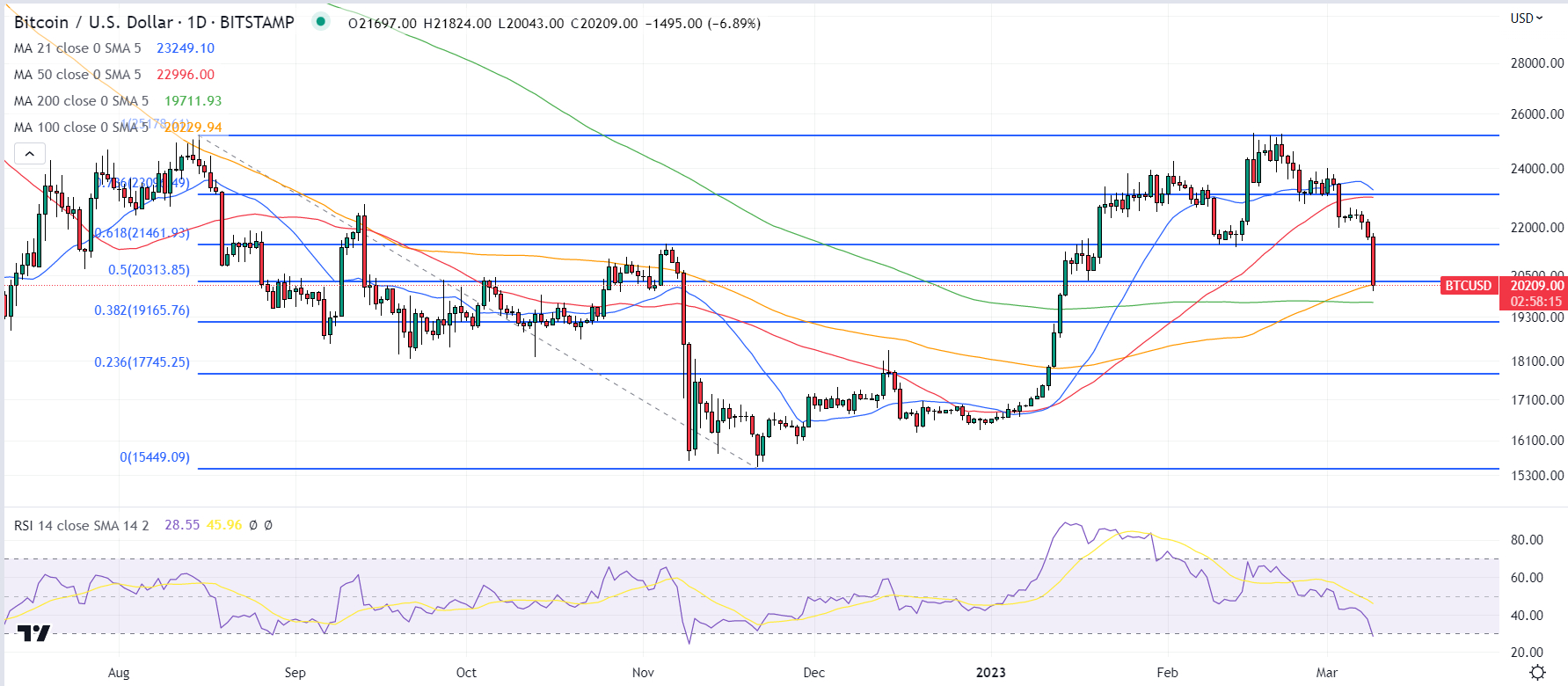In wake of Bitcoin’s latest slide below the $21,000 level on Thursday as traders mull headwinds including a growing liquidity crisis amongst major crypto-friendly banks and ongoing macro headwinds as the US Federal Reserve signals risks, Bitcoin options have turned their most pessimistic on the cryptocurrency’s near-term price outlook this year.
BTC/USD was last trading in the $20,700s, lower by over 5.0% in the last 24 hours according to CoinMarketCap and now down roughly 18% from earlier yearly highs in the low-$25,000s. At the same time, the 25% delta skew of Bitcoin options expiring 7 days from now on Thursday fell to around -6, the lowest since late December 2022.

The 25% delta options skew is a popularly monitored proxy for the degree to which trading desks are over or undercharging for upside or downside protection via the put and call options they are selling to investors. Put options give an investor the right but not the obligation to sell an asset at a predetermined price, while a call option gives an investor the right but not the obligation to buy an asset at a predetermined price.
A 25% delta options skew above 0 suggests that desks are charging more for equivalent call options versus puts. This implies there is higher demand for calls versus puts, which can be interpreted as a bullish sign as investors are more eager to secure protection against (or bet on) a rise in prices.
Longer-Term Price View Holding Firm for Now
While the 25% delta skew of options expiring in 30-days and 60-days also fell to their lowest levels of the year of around -3 and -2 respectively, the 25% delta skew of options expiring in 90 and 180-days have been holding up, with both remaining close to zero. That suggests that investors are taking the view that the current headwinds faced by the market (crypto banks falling, US regulators upping scrutiny and the Fed’s continued tightening efforts) are unlikely to send Bitcoin lower on a sustained basis from current levels.

Options markets are also sending the message that Bitcoin investors remain fairly sanguine on price volatility risks. Implied Volatiltiy according to At-The-Money (ATM) options expiring in 7, 30, 90 and 180-days are broadly unchanged over the course of the last month.

Meanwhile, Deribit’s Bitcoin Volatility Index (DVOL) is also broadly unchanged versus recent weeks at 49, and still not far above the record lows of 42 it hit earlier this year.
Where Next for Bitcoin (BTC)?
Bitcoin’s latest price collapse has opened the door to a possible drop back below the $20,000 level. But traders will be eyeing near-term support in the $19,700-800 region in the form of the 200-Day Moving Average and Realized Price, level which, if retested, could attract significant dip-buying interest.

Looking at Bitcoin on a broader time horizon, Bitcoin’s latest drop still leaves it well within the ranges of the past eight months. While further downside may be instore, with Bitcoin having only erased 50% of its rally from its November 2022 lows, it remains far to soon to bet on new bear-market cycle lows for the world’s largest cryptocurrency by market capitalization.
In the near-term, US jobs data for February scheduled for release on Friday and next week’s US CPI report will be key in determining near-term momentum. Bulls will be hoping for downside surprises that might ease concerns about Fed tightening and provide the BTC price with some space for a recovery.
Credit: Source link




















